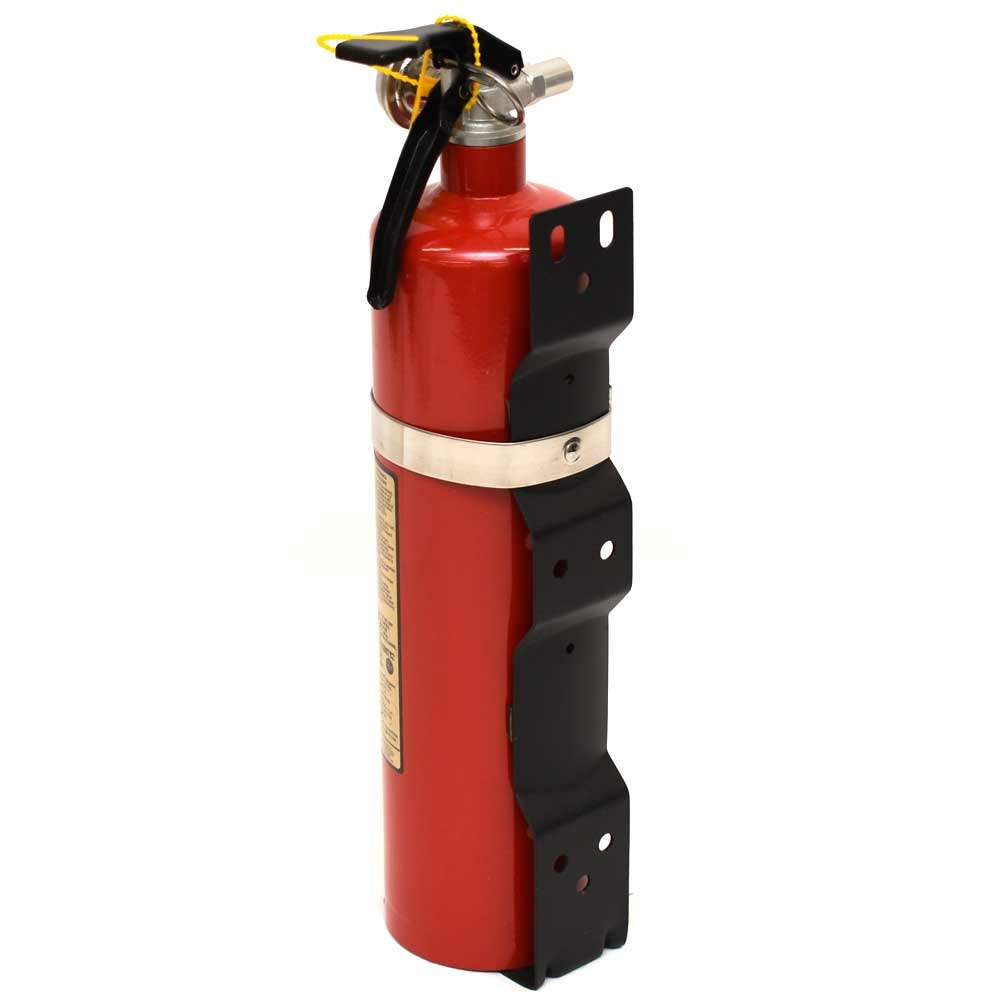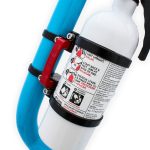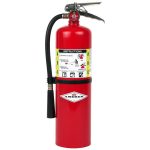Safety is crucial when you’re out on the water, and maintaining your boat fire extinguisher is a vital part of that safety plan. Fires can happen unexpectedly on a boat, whether due to cooking mishaps, electrical failures, or fuel leaks. Having a properly functioning fire extinguisher can be the difference between a minor incident and a major disaster. Keeping your fire safety equipment in top condition requires regular checks and understanding how to operate it effectively. In this comprehensive guide, we’ll cover best practices for maintaining your boat fire extinguisher to ensure you’re always prepared for emergencies.
Understanding Fire Extinguisher Types
Common Types of Fire Extinguishers
Before diving into maintenance, it’s essential to know what type of fire extinguisher you have on board. Most boats are equipped with two primary types of extinguishers: ABC extinguishers and specialized marine extinguishers. An ABC extinguisher can handle Class A (ordinary combustibles), Class B (flammable liquids), and Class C (electrical) fires, making it versatile for use in typical boating scenarios. Class A fires include those fueled by wood or paper, Class B fires involve flammable liquids like gasoline, and Class C fires are associated with electrical equipment.
A specialized marine extinguisher may utilize unique extinguishing agents designed for marine environments, often featuring corrosion-resistant materials and structures. This feature is incredibly important given the humid and salty environment on many boats. Each type works differently, so understanding what you have will help in maintenance and usage.
Selecting the Right Size
Fire extinguishers come in various sizes, typically measured in pounds, with smaller units being easier to handle and larger units providing more firefighting capacity. For boats, ensure you have the right size based on your vessel’s size and the potential risks. Check local regulations to see if they specify minimum sizes or the number of extinguishers required for the type of boat you own. Larger boats often require multiple extinguishers, placed in various locations for easy access.
Understanding both the types and the proper sizes to have on board will make a significant difference when it counts. Having the correct equipment ensures that all crew members are equipped to handle emergencies effectively. Spending time reviewing this information will pay off when an emergency arises.

Regular Inspection of Fire Extinguishers
Schedule Routine Checks
Regular inspections are critical in maintaining the effectiveness of your fire extinguishers. Aim to inspect your extinguishers at least once a month or before heading out on extended trips. During inspections, visually check for any physical damage, corrosion, leaks, or signs of discharge. A damaged extinguisher may not function properly when you need it, and it’s essential to repair or replace it as soon as possible. Look for any dents, rust, or corrosion that could indicate compromised integrity.
If your fire extinguisher has a tamper seal, ensure it is intact. If it has been activated, even partially, you should consider recharging or replacing the unit. Keeping a log of inspections can also help track when maintenance was last performed, ensuring you don’t overlook these critical checks over time.
Examine Pressure Gauges
Most fire extinguishers come equipped with a pressure gauge that indicates whether the unit is charged and ready for use. Check this gauge during each inspection to ensure it’s within the green zone, indicating adequate pressure. If the needle is in the red zone, the extinguisher may need a recharge or replacement. Don’t wait until an emergency occurs to find out your extinguisher isn’t functioning; regularly verifying pressure levels ensures that you’ll be ready in case of fire.
If the extinguisher has a disposable, non-rechargeable design, make sure to replace it according to the manufacturer’s recommendations. Establishing a routine, such as checking the extinguisher during your pre-departure checklist, will help instill these important practices into your routine.
Maintenance and Servicing Requirements
Cleaning and Care
Keeping your fire extinguisher clean is vital for optimal performance. Dust and debris can accumulate over time, potentially blocking the nozzle or affecting the pressure gauge. Wipe down the outside of the extinguisher with a dry cloth, and check for any signs of corrosion or physical damage. For those stored in humid or coastal areas, this step is particularly important to avoid rust.
Furthermore, examine the condition of mounting brackets and any straps holding the extinguisher in place, ensuring they secure the extinguisher effectively. If an extinguisher is dropped while aboard, inspect it for potential damage and test it according to the instructions. The goal is to maintain it in a state of readiness for immediate use.
Professional Servicing
In addition to regular inspections, fire extinguishers should undergo professional servicing every 1-6 years, depending on the type of extinguisher. Professionals can conduct hydrostatic testing, which determines if the extinguisher can withstand the pressure required to function correctly. Following the manufacturer’s guidelines regarding inspection and servicing is crucial to ensure reliability during emergencies.
Some manufacturers provide specific schedules for servicing, which usually includes checking seals and gaskets for wear and ensuring all internal components are functional. Utilizing a certificated technician to conduct annual or biennial checks will not only prolong the lifespan of your extinguisher but also gives you peace of mind that it will operate effectively when needed.

Storing Your Fire Extinguisher Properly
Ideal Locations on the Boat
Where you store your boat fire extinguisher significantly impacts its accessibility and effectiveness. Keep extinguishers in easily accessible locations in case a fire breaks out, ideally near high-risk areas like the galley or engine compartment. The ideal spots include near the helm where you can quickly grab it in the event of an emergency. It is also wise to have extinguishers at the entry points, so you can easily access them during a fire, instead of hunting through cabinets for equipment.
Avoiding Obstructions
Ensure that your fire extinguisher is not obstructed by other equipment or gear. Free access allows for a rapid response in emergencies. Training all crew members on where the extinguisher is stored and how to use it enhances safety. Consider marking the location prominently to ensure visibility even under stressful conditions. Labeling the area with a noticeable sign or decals can serve helpful reminders, ensuring your extinguishers remain top-of-mind.
Regularly revisiting the storage area during clean-up ensures that nothing blocks access to your fire extinguishers. The more familiarized everyone is with the layout and access points aboard, the more effective the response will be in case of fire.
Training Crew Members
Importance of Familiarization
Teaching all crew members how to operate the boat fire extinguisher is as important as maintenance. Conduct regular training sessions to familiarize everyone with its usage. Practical demonstrations help instill confidence and competence among crew members, allowing them to act swiftly if a fire breaks out. Basic procedures should include identifying the type of fire and understanding which extinguisher is best suited for that situation.
Consider including simple drills where crew members practice retrieving the fire extinguisher from its storage, pulling the pin, aiming the nozzle, and engaging the lever. Practice makes perfect, and getting everyone comfortable with the equipment will help reduce panic during a real emergency. Developing a positive culture around safety and preparedness contributes significantly to handling unforeseen events effectively.
Performing Drills
Conducting fire drills on your boat helps everyone understand their roles during a fire emergency. Simulated exercises clarify procedures like finding the nearest extinguisher, understanding the PASS method (Pull, Aim, Squeeze, Sweep), and identifying safe evacuation routes if necessary. These drills will prepare everyone for the real situation and reduce panic, ensuring they can respond effectively.
You might also consider integrating safety discussions into crew meetings or outings. Open discussions about different emergency scenarios, training techniques, and safety tips help build awareness and readiness among all crew members. It’s about building a proactive approach to safety, ensuring that each person is equipped to contribute to a safe boating experience.

Proper Disposal and Replacement
Disposing of Old Extinguishers
A fire extinguisher that is no longer functioning should be disposed of responsibly. Many local fire departments or hazardous waste facilities provide disposal services for expired or damaged extinguishers. Avoid throwing them in regular trash, as they can contain pressurized contents that may pose a danger. Many manufacturers offer recycling programs for their products, providing consumers with an environmentally friendly way to dispose of equipment.
Taking the time to ensure proper disposal also emphasizes the importance of safety. Informing your crew about safe disposal practices reinforces the commitment to keeping both the environment and the boating community safe.
Replacement Options
When replacing a fire extinguisher, ensure you choose the right one for your boat’s needs. Consider size, type, and rating when selecting a replacement. You might even consult local regulations to ensure compliance. As mentioned before, consulting professionals for advice on the best extinguisher tailored to boat type and size can also yield valuable insights.
Additionally, researching brands and models can help identify those that have received good reviews specifically from other boaters. Reading up on feedback can reveal experiences that help guide your decision, ensuring you invest in reliable options that provide peace of mind and assurance in emergencies.
Stay Informed About Fire Safety
Keep Learning
Maintain awareness of fire safety rules and practices related to boating. Familiarize yourself with the types of risks common to your specific environment, such as cooking fires, electrical malfunctions, or fuel spills. Staying informed will guide your maintenance practices and help you prepare effectively for emergencies. Ongoing education about evolving standards for fire safety, especially in marine settings, will help you stay ahead of potential hazards.
Consider seeking out courses in boating safety and fire prevention. Many organizations offer workshops that can provide immense value in enhancing knowledge and skills. Being proactive helps cultivate a culture of safety, fostering an environment where all crew members become invested in being prepared for any situation.
Networking and Resources
Engage with local boating communities, organizations, and safety courses to stay updated on best practices and upcoming safety legislation. Many organizations offer valuable resources on fire safety and equipment handling. Take advantage of these resources to enhance your safety knowledge and the overall safety culture on your boat. Networking with other boaters often leads to shared insights, experiences, and safety tips.
Joining forums or attending boating safety seminars may also connect you to valuable contacts who can offer specialized advice or services related to fire safety and equipment maintenance. Making ongoing education part of your boating experience strengthens your skills, enhances safety, and enriches the joy of being on the water.
Conclusion
Properly maintaining your boat fire extinguisher is essential for ensuring safety on the water. Regular inspections, proper storage, and crew training all contribute to effective fire safety measures. By understanding how to maintain your fire extinguishers and choosing the right equipment, you prepare yourself and your crew to respond swiftly and effectively to emergencies. Prioritizing fire safety on your boat ensures that every outing remains enjoyable, safe, and prepared for the unexpected.
Incorporate regular checks, cleaning, training, and progress as part of your boating routine. With diligent attention to detail and education, you can significantly enhance the safety culture aboard your vessel. So, make it a habit to check, clean, and educate yourself and your crew on fire safety practices, and you’ll be ready to tackle any challenges that come your way. Happy and safe boating!


